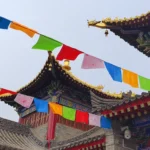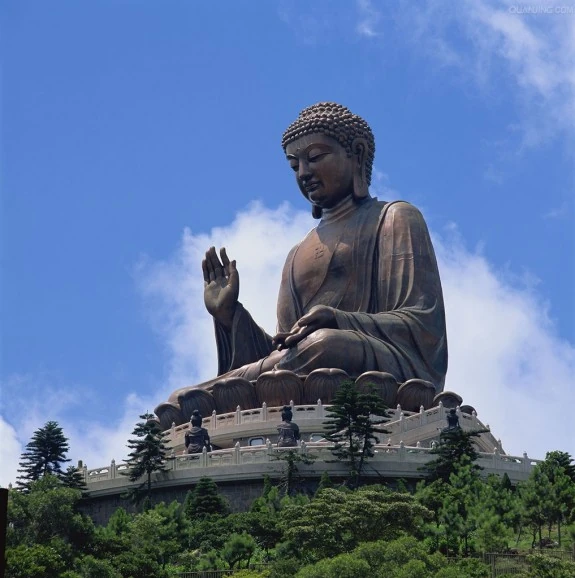If you are planning to visit Hong Kong, one of the most calming and sacred places to include in your journey is the Tian Tan Buddha, also known as the Big Buddha. Located on Lantau Island, this enormous bronze statue offers not only a stunning spiritual sight but also a taste of Hong Kong’s rich cultural heritage. Many travelers search for directions, visitor advice, and historical background when planning a visit to the Tian Tan Buddha, so here is a detailed guide filled with useful tips and interesting stories.
Table of Contents
Getting to Tian Tan Buddha from Hong Kong City
Starting your trip from Hong Kong’s busy city center, the journey to Tian Tan Buddha is part of the experience. Most visitors take the MTR and then the iconic Ngong Ping 360 cable car, which offers spectacular views of the sea and mountains. From Central or Tung Chung stations, you can catch the cable car directly to Ngong Ping Village, just a short walk from the Buddha.
For a wider view of Hong Kong’s blend of old and new, visit the local insider’s guide to Hong Kong covering vibrant neighborhoods, food, and culture.
If you prefer a bus, the New Lantao Bus No. 23 connects Tung Chung with Ngong Ping. This route is slower but gives a more local feel as you pass through quaint villages and forested landscapes.
For airport arrivals, take the Airport Express to Tung Chung Station, then switch to the cable car or the bus. The cable car ride typically lasts about 25 minutes and is highly recommended for its breathtaking panorama.
Nearby Places to Stay and Taste Local Foods
While there are no hotels right at the site, nearby Tung Chung and Tai O villages offer guesthouses and small inns ranging from modest to mid-range. Staying here gives visitors early access to the Buddha before crowds arrive and a chance to explore peaceful village life.
Don’t miss sampling some local delicacies in Tai O fishing village, such as salted fish and shrimp paste. The waterfront eateries offer fresh seafood with a rustic charm. Near Ngong Ping, traditional “dim sum” teahouses provide delicate bites like steamed buns and rice rolls, celebrating the region’s famous Cantonese cuisine.
Understanding the Meaning and History of Tian Tan Buddha
The massive statue, standing 34 meters tall, represents the harmonious relationship between man and nature, people and faith. Completed in 1993, Tian Tan Buddha is one of the largest outdoor seated Buddha statues in the world. It is named after the Altar of Heaven in Beijing, reflecting its importance as a place of worship and peace.
Unlike many other Buddhas, this statue faces north, looking toward the city of Hong Kong rather than the sea. This posture is said to bring blessings and calm to urban life, reminding visitors of the Buddhist principle of compassion amid the bustle.
Visitors often pause to admire the statue’s detailed craftsmanship from bronze plates and the solemn expression on the Buddha’s face, which invites contemplation. Surrounding the statue are six smaller bronze figures called “The Offering of the Six Devas” who symbolize generosity, morality, patience, zeal, meditation, and wisdom. These virtues hold deep cultural significance in Buddhist traditions and Chinese philosophy.
Planning Your Visit: Best Times and Entry Information
The site welcomes visitors daily from early morning until evening, but the best time to arrive is on weekdays, preferably in the morning, to avoid large crowds and enjoy the quiet atmosphere. Weekends and public holidays can be busy, especially during festivals such as Buddha’s Birthday, when elaborate ceremonies and traditional performances fill the plaza.
After visiting Tian Tan Buddha, you might appreciate Phuket’s Big Buddha and its peaceful hilltop views as a spiritual contrast Phuket Island’s Best Sights and Tastes.
Tickets to the Ngong Ping 360 cable car are recommended to buy in advance during peak seasons. This helps avoid long queues and ensures a smooth journey. Reservations can be made directly on the official Ngong Ping 360 website, which also provides updates on weather conditions and special events.
Walking up the 268 steps to reach the statue may be challenging for some. Take your time and pause along the path to admire views of the nearby Po Lin Monastery and the natural beauty surrounding the area.
Those interested in spiritual landmarks might find the serene atmosphere and cultural depth of the Plaza Mayor in Lima worth exploring after visiting Tian Tan Buddha, providing a different historical city experience through colonial architecture and vibrant public spaces. Discover Lima’s Plaza Mayor.
What to Expect Around Tian Tan Buddha
Adjacent to the Big Buddha is the Po Lin Monastery, a tranquil Buddhist retreat established in 1906. The monastery reflects traditional Chinese architecture with its richly decorated halls, incense-filled air, and serene gardens. Visitors can witness monks performing morning rituals and even join vegetarian meals at the monastery’s dining hall, a perfect chance to taste authentic Buddhist cuisine known for subtle flavors and healthful ingredients.
Below the statue and monastery lies Ngong Ping Village, a cultural center designed to complement the sacred site. Here, you will find shops selling handcrafted souvenirs, traditional arts, and local snacks, such as roasted chestnuts and steamed cakes.
Hidden Stories and Traditions You May Miss
Many visitors do not realize Tian Tan Buddha is a relatively modern creation but is rooted deeply in centuries of Buddhist practice native to the region. The statue’s sitting position is known as the “Dhyanasana” or meditation pose, fostering inner peace and mindfulness.
Legend has it that before the statue was built, the area was a popular place for local fishermen to pray for safety and a good catch. Today, the site continues to serve as a spiritual refuge in the midst of Hong Kong’s fast pace, linking ancient traditions with contemporary life.
Useful Visitor Tips for a Memorable Trip
- Wear comfortable shoes – you will climb many stairs and walk on uneven paths.
- Check weather forecasts – cable car rides may close during bad weather like strong winds or rain.
- Bring water and light snacks, although you will find food stalls, healthier and budget options are limited.
- Respect religious practices – maintain quiet and dress modestly when visiting the Buddha and monastery.
- Try the vegetarian meal at Po Lin Monastery – it’s both a cultural and culinary delight.
- Morning visits provide soft light perfect for photography, enhancing the golden hues of the bronze Buddha.
Where to Learn More and Plan Your Visit
For detailed ticket information, opening hours, and travel updates, the official Ngong Ping 360 website is an excellent resource. You can plan your cable car journey, book tickets online, and learn about cultural events happening at Ngong Ping and the surrounding areas. Visit the Ngong Ping 360 homepage for the latest information.
The Tian Tan Buddha remains a beacon of peace amid a city famed for its rapid energy. Standing beneath its calm gaze creates a moment of silence and reflection that stays with you long after you leave. For anyone curious about Hong Kong’s spiritual heart and cultural depth, this gentle giant on Lantau Island is a must-see.

A Chinese tour guide with deep knowledge of the Far East, its traditions, and culinary secrets.
- Big-Buddha by Kitakitzcom on Wikimedia Commons – cc by-sa 4.0
